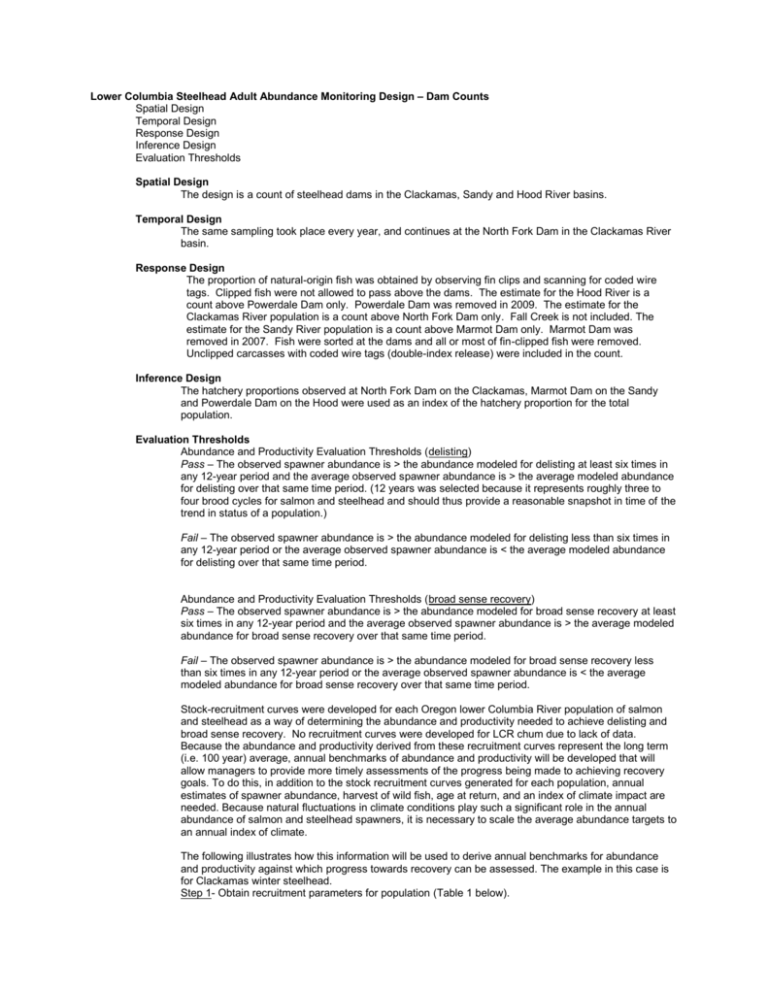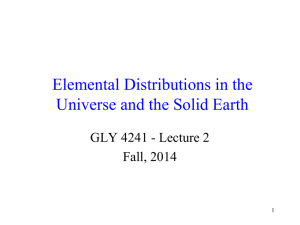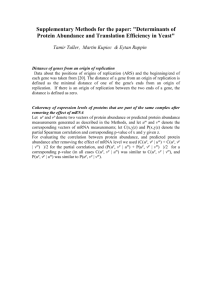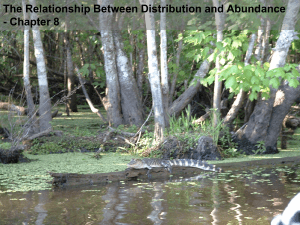Monitoring Design
advertisement

Lower Columbia Steelhead Adult Abundance Monitoring Design – Dam Counts Spatial Design Temporal Design Response Design Inference Design Evaluation Thresholds Spatial Design The design is a count of steelhead dams in the Clackamas, Sandy and Hood River basins. Temporal Design The same sampling took place every year, and continues at the North Fork Dam in the Clackamas River basin. Response Design The proportion of natural-origin fish was obtained by observing fin clips and scanning for coded wire tags. Clipped fish were not allowed to pass above the dams. The estimate for the Hood River is a count above Powerdale Dam only. Powerdale Dam was removed in 2009. The estimate for the Clackamas River population is a count above North Fork Dam only. Fall Creek is not included. The estimate for the Sandy River population is a count above Marmot Dam only. Marmot Dam was removed in 2007. Fish were sorted at the dams and all or most of fin-clipped fish were removed. Unclipped carcasses with coded wire tags (double-index release) were included in the count. Inference Design The hatchery proportions observed at North Fork Dam on the Clackamas, Marmot Dam on the Sandy and Powerdale Dam on the Hood were used as an index of the hatchery proportion for the total population. Evaluation Thresholds Abundance and Productivity Evaluation Thresholds (delisting) Pass – The observed spawner abundance is > the abundance modeled for delisting at least six times in any 12-year period and the average observed spawner abundance is > the average modeled abundance for delisting over that same time period. (12 years was selected because it represents roughly three to four brood cycles for salmon and steelhead and should thus provide a reasonable snapshot in time of the trend in status of a population.) Fail – The observed spawner abundance is > the abundance modeled for delisting less than six times in any 12-year period or the average observed spawner abundance is < the average modeled abundance for delisting over that same time period. Abundance and Productivity Evaluation Thresholds (broad sense recovery) Pass – The observed spawner abundance is > the abundance modeled for broad sense recovery at least six times in any 12-year period and the average observed spawner abundance is > the average modeled abundance for broad sense recovery over that same time period. Fail – The observed spawner abundance is > the abundance modeled for broad sense recovery less than six times in any 12-year period or the average observed spawner abundance is < the average modeled abundance for broad sense recovery over that same time period. Stock-recruitment curves were developed for each Oregon lower Columbia River population of salmon and steelhead as a way of determining the abundance and productivity needed to achieve delisting and broad sense recovery. No recruitment curves were developed for LCR chum due to lack of data. Because the abundance and productivity derived from these recruitment curves represent the long term (i.e. 100 year) average, annual benchmarks of abundance and productivity will be developed that will allow managers to provide more timely assessments of the progress being made to achieving recovery goals. To do this, in addition to the stock recruitment curves generated for each population, annual estimates of spawner abundance, harvest of wild fish, age at return, and an index of climate impact are needed. Because natural fluctuations in climate conditions play such a significant role in the annual abundance of salmon and steelhead spawners, it is necessary to scale the average abundance targets to an annual index of climate. The following illustrates how this information will be used to derive annual benchmarks for abundance and productivity against which progress towards recovery can be assessed. The example in this case is for Clackamas winter steelhead. Step 1- Obtain recruitment parameters for population (Table 1 below). Step 2 – Determine the age composition of the returning fish. Step 3 – Obtain total number of spawners (hatchery + wild) for each brood year. Step 4- Obtain climatic index for each brood year (can be downloaded from this site). Step 5 – Calculate recruits for each brood year using the following equation based on recruitment curve for the population. Step 6 – Calculate recruits after fishery (i.e. spawners) using the fishery impact rates used to determine the “modeled current” abundance. Step 7 – Multiply each brood year recruits by recovery scalar to obtain the number of spawners needed to meet recovery goals given climate conditions for each brood year. The recovery scalar is the amount that the current survival rate needs to be improved to get the probability of CRT to the threshold for the risk category targeted for the population. Numbers are calculated as the exp (Ln(Rt)) estimated from Eq. 1. (Table 2 below) Step 8 – Use the age composition for this population to determine how many of each age fish returned using the brood year recruits estimated in Step 7. Step 9 – Take the forecast total and expand it by 20 percent to provide a buffer for the impacts of climate change. Step 10 – The number derived in Step 9 is the forecast return if recovery goals have been met. These annual forecasts can be plotted along with the actual number of spawners observed to track progress towards recovery. Table 1. Recruitment model parameters inferred or estimated from data for lower Columbia River populations of salmon and steelhead with the best matching environmental index and associated time lag relative to parental brood year. Table 2. Recovery scalar: the amount that the current survival rate needs to be improved to attain the threshold for the risk category targeted for the population.







